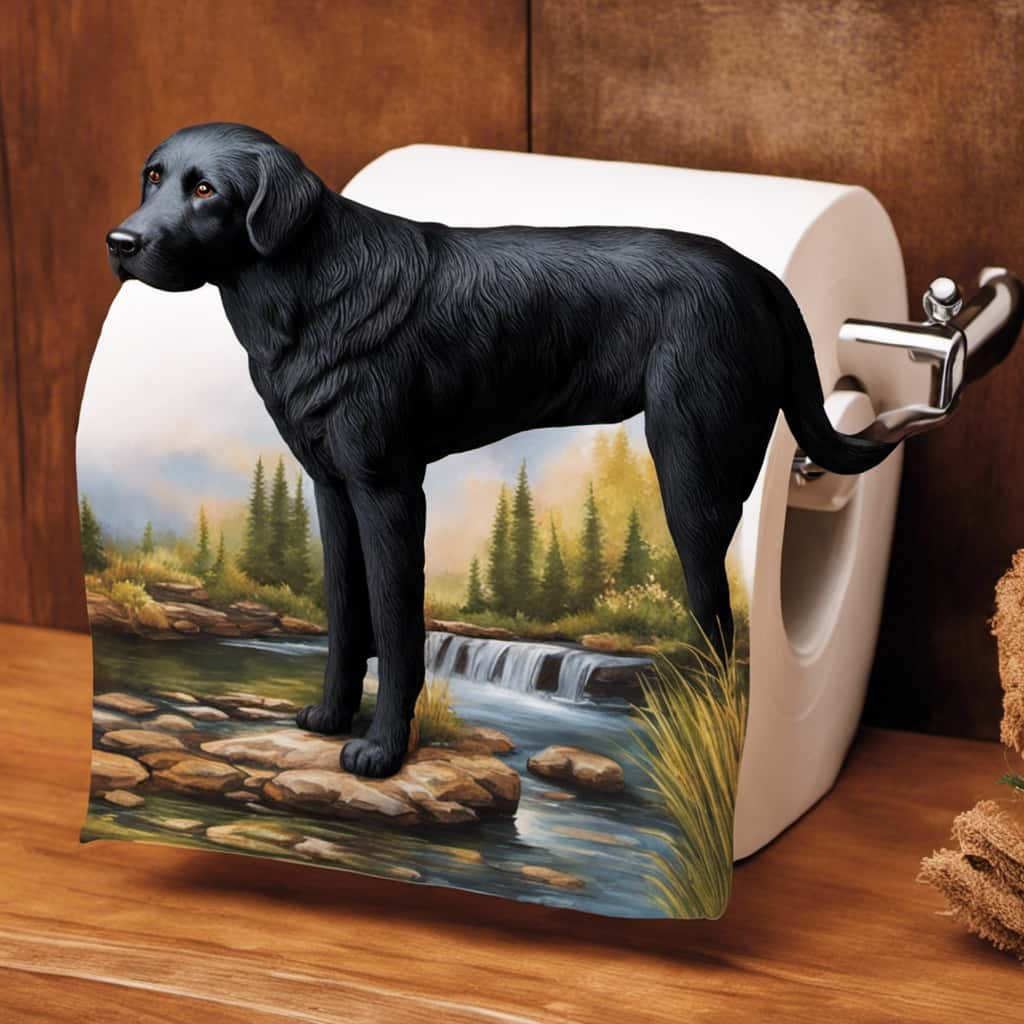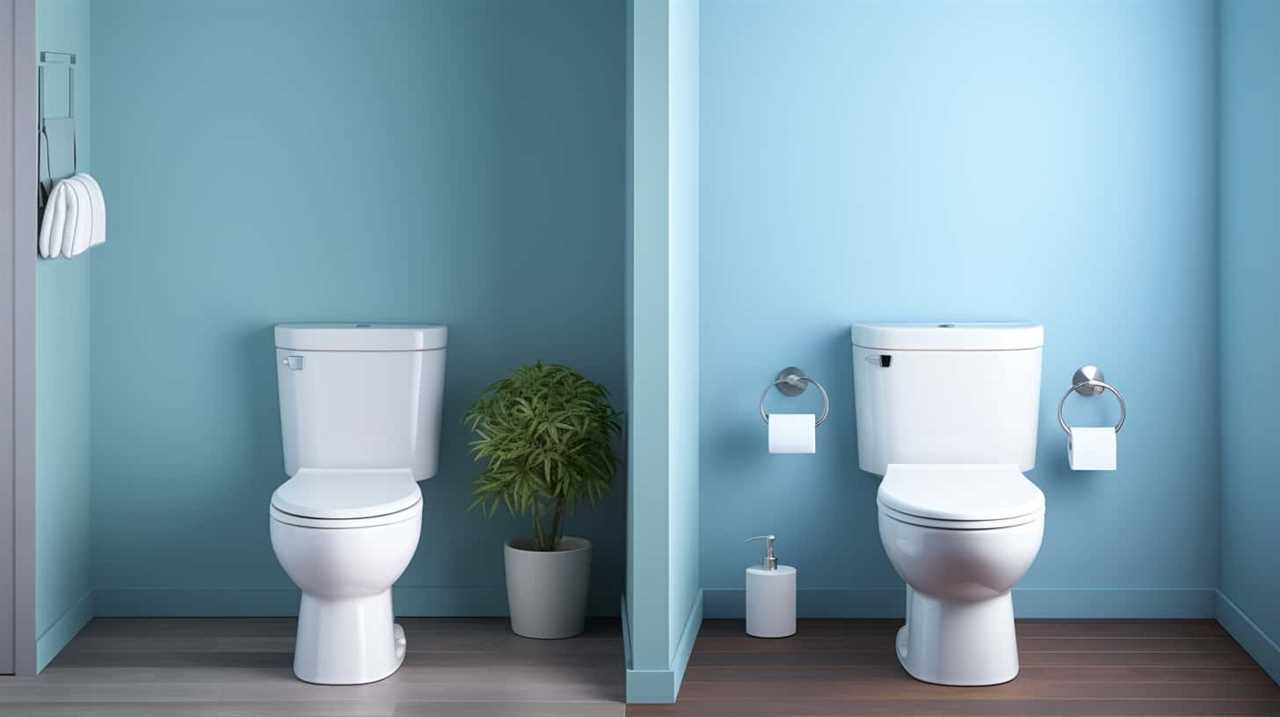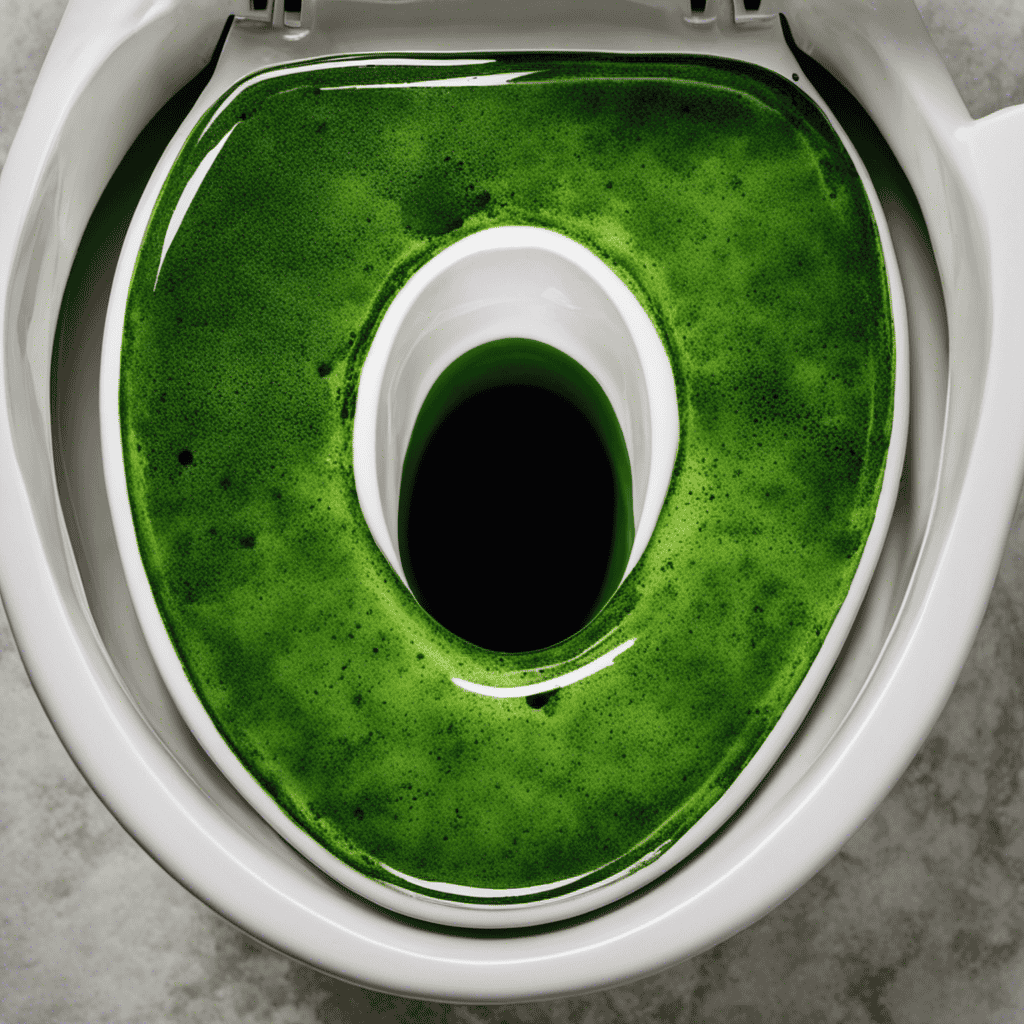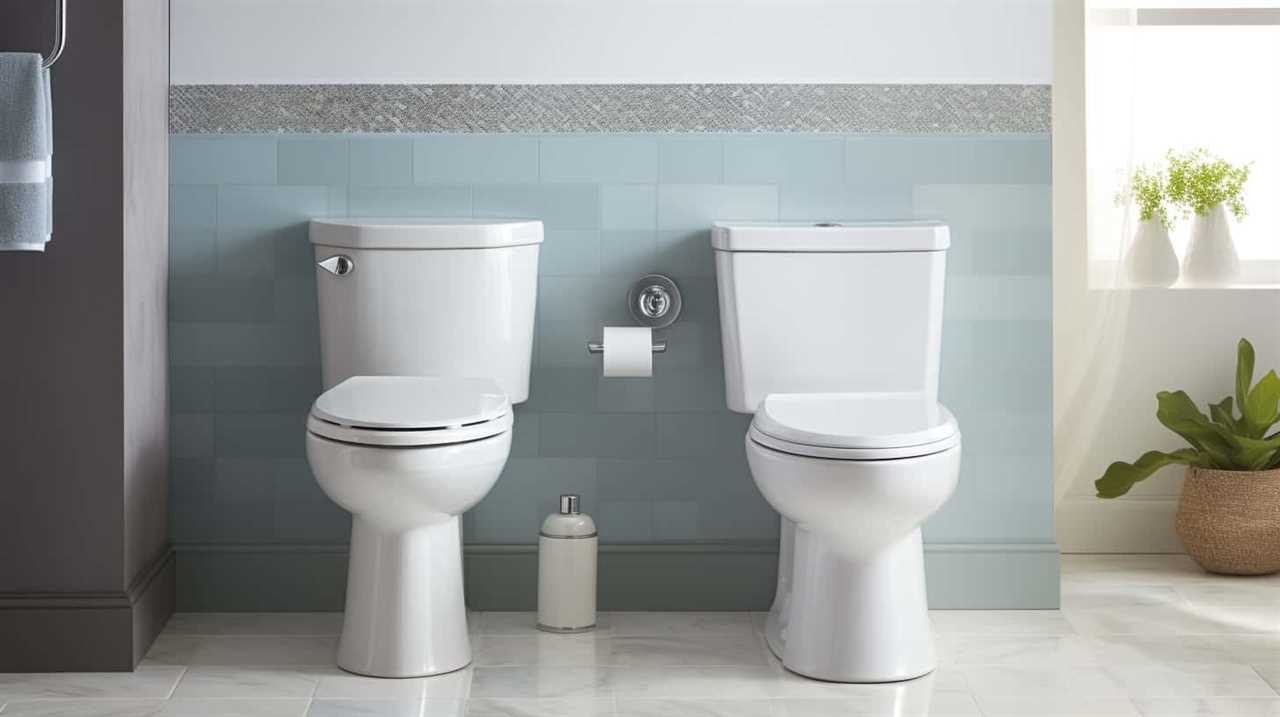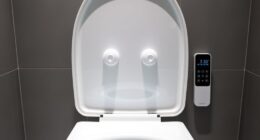Are you curious about whether dual flush toilets actually save water?
Well, we’ve got the data-driven answers you’ve been searching for. In this article, we’ll explore the inner workings of dual flush toilets, compare their water consumption with traditional toilets, and provide real-life examples of water savings.
Plus, we’ll share expert tips on how to maximize your water savings with a dual flush toilet.
Get ready to master the art of water conservation!
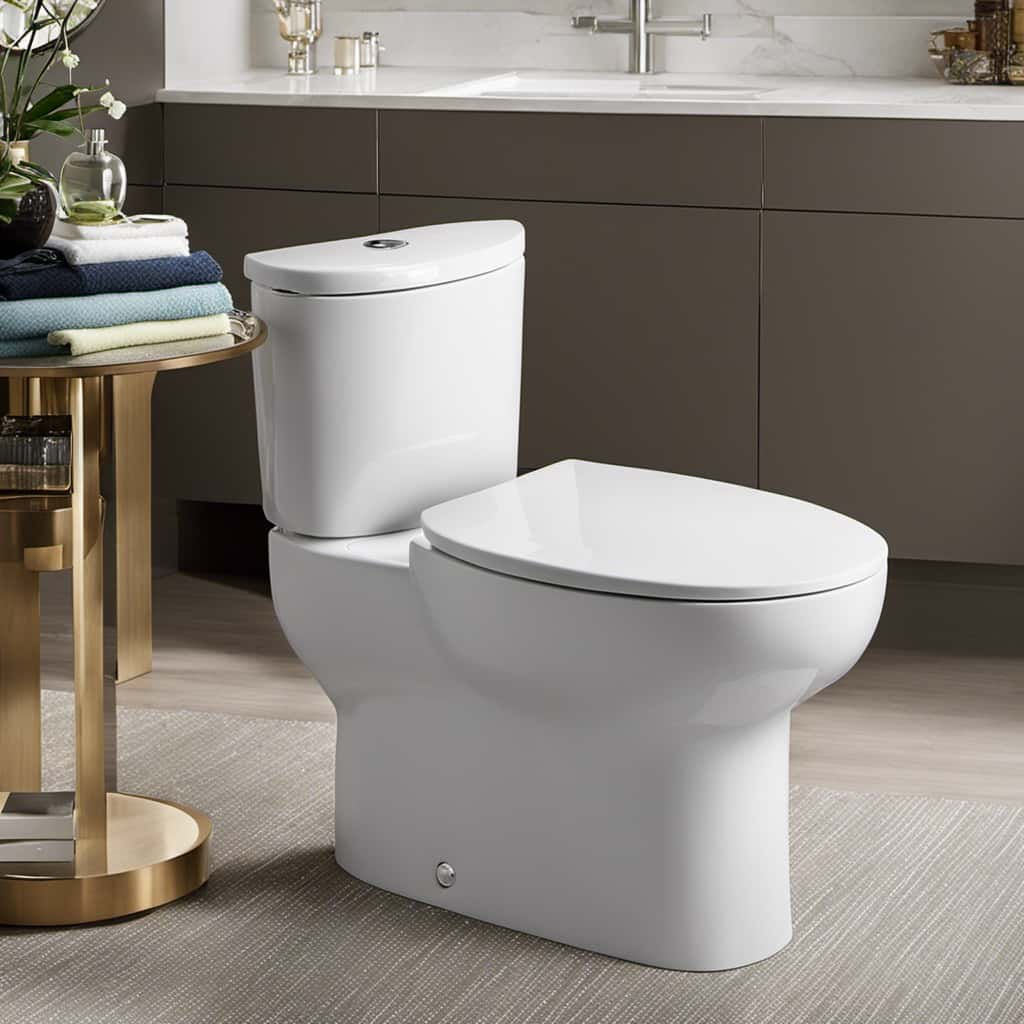
Key Takeaways
- Dual flush toilets can save up to 67% more water compared to traditional toilets.
- Dual flush toilets have a lower environmental impact due to their reduced water usage.
- Real-world data from households and commercial buildings demonstrate lower water bills with dual flush toilets.
- Using the appropriate flush option for liquid waste and solid waste, as well as proper maintenance, is crucial for maximizing water savings with dual flush toilets.
How Does a Dual Flush Toilet Work
To understand how a dual flush toilet works, let’s dive into the mechanics of this water-saving device.
A dual flush toilet operates with two separate flushing options: a half flush and a full flush. The half flush is designed for liquid waste and uses significantly less water, typically around 0.8 gallons, while the full flush is meant for solid waste and uses around 1.6 gallons.
The advantages of a dual flush toilet are evident in its water-saving capabilities. Compared to traditional toilets that use a constant amount of water for every flush, dual flush toilets allow for more efficient water usage, resulting in reduced water consumption and lower water bills. Additionally, dual flush toilets contribute to conservation efforts by minimizing water wastage.
However, there are some disadvantages to consider. The initial cost of installing a dual flush toilet can be higher compared to traditional toilets. Additionally, some users may find the dual flush buttons confusing or may forget to use the appropriate flush option, resulting in unintentional water wastage.
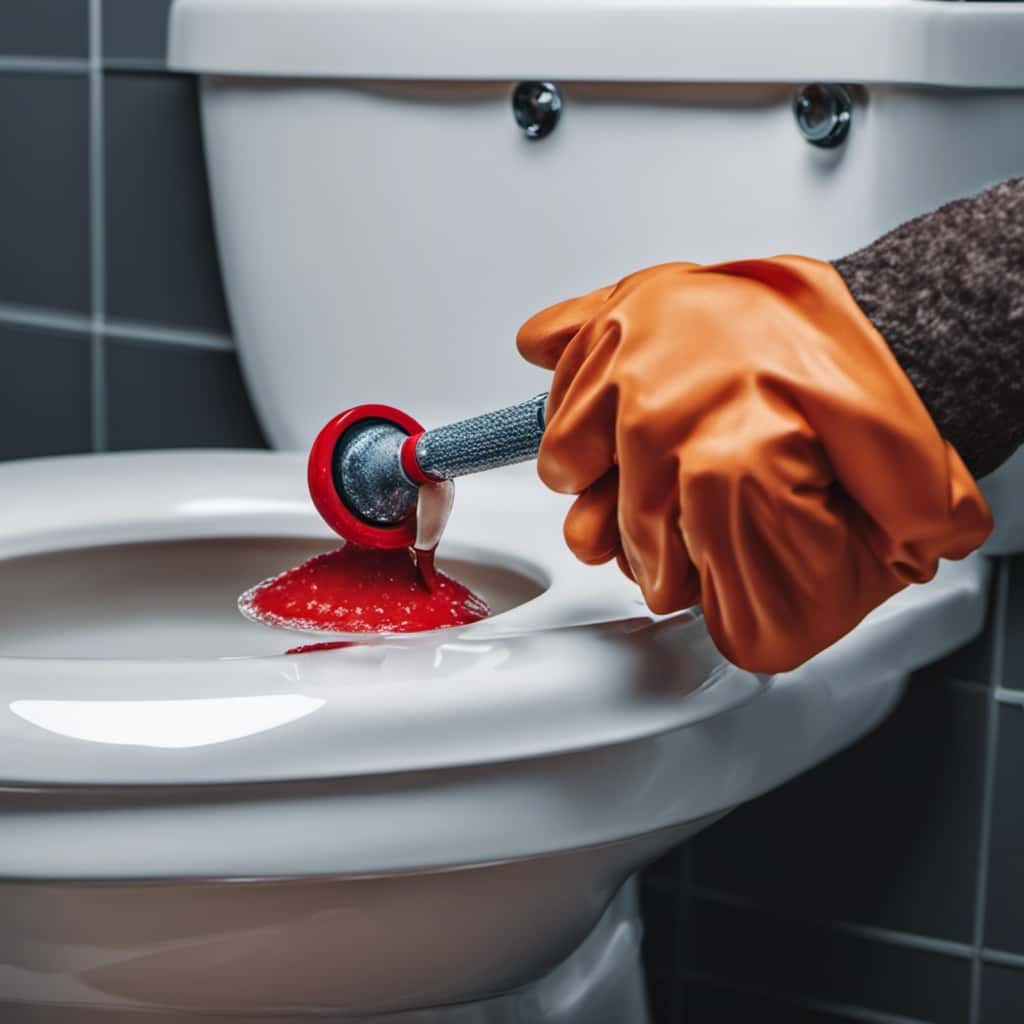
Despite these drawbacks, the overall benefits of dual flush toilets make them a wise choice for individuals seeking to conserve water and reduce their environmental impact.
The Benefits of Using a Dual Flush Toilet
Using a dual flush toilet offers numerous advantages, including water savings and reduced environmental impact. Here are four key benefits of using a dual flush toilet:
- Water Efficiency: Dual flush toilets are designed to provide two flushing options – a low-volume flush for liquid waste and a full-volume flush for solid waste. By using the appropriate flush, you can significantly reduce water consumption. Studies have shown that dual flush toilets can save up to 67% more water compared to traditional toilets.
- Cost Savings: With lower water consumption, dual flush toilets can help you save on your water bills. Over time, the savings can add up, making it a cost-effective choice.
- Environmental Impact: By conserving water, dual flush toilets contribute to the preservation of our water resources. Additionally, reduced water usage means less strain on wastewater treatment facilities and a lower carbon footprint.
- Versatility and Convenience: Dual flush toilets offer flexibility in terms of flushing power, allowing you to choose the appropriate flush for different types of waste. This versatility ensures efficient and hygienic waste disposal.
Comparing Water Consumption: Dual Flush Vs. Traditional Toilets
We frequently compare the water consumption of dual flush toilets to that of traditional toilets. When it comes to water saving benefits, dual flush toilets outperform traditional toilets. On average, dual flush toilets use about 1.28 gallons (4.8 liters) of water per flush, while traditional toilets use around 1.6 gallons (6 liters) per flush.
This may seem like a small difference, but it can make a significant impact on water conservation, especially in places where water scarcity is a concern. Additionally, the environmental impact of dual flush toilets is lower due to their reduced water usage.

Real-Life Water Savings With Dual Flush Toilets
In our everyday lives, dual flush toilets provide significant water savings. Here is a list of real-life water savings with dual flush toilets:
- Case studies have shown that dual flush toilets can save up to 68% more water compared to traditional toilets. This is due to their ability to differentiate between liquid waste and solid waste, allowing users to choose the appropriate flush option.
- Environmental impact assessments have revealed that widespread adoption of dual flush toilets can conserve millions of gallons of water annually. This reduction in water consumption not only helps to preserve vital water resources but also reduces the strain on wastewater treatment facilities.
- Real-world data from households and commercial buildings that have switched to dual flush toilets consistently demonstrate lower water bills. This is a direct result of the decreased water usage associated with dual flush technology.
- Dual flush toilets have become increasingly popular in regions facing water scarcity or high water costs. Their ability to save water without compromising on performance makes them an attractive option for environmentally conscious individuals and businesses.
Based on these findings, it’s clear that dual flush toilets offer practical and measurable water savings, making them a valuable tool in water conservation efforts.
Tips for Maximizing Water Savings With a Dual Flush Toilet
To maximize water savings with a dual flush toilet, we can implement a few simple tips.
Firstly, it’s important to avoid common mistakes when using a dual flush toilet. One common mistake isn’t using the appropriate flushing option for the waste being disposed. The low flush option should be used for liquid waste, while the high flush option should be used for solid waste.
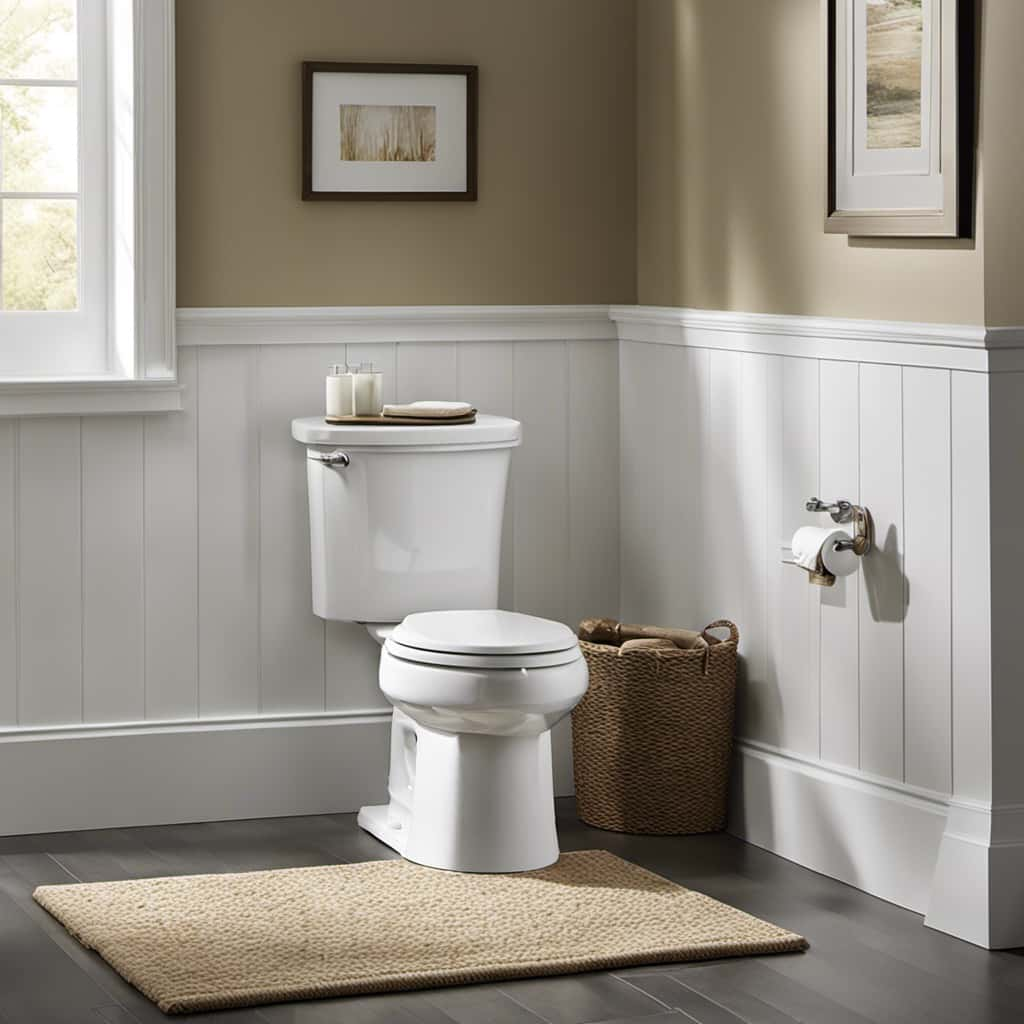
Additionally, it’s crucial to properly maintain a dual flush toilet for optimal water efficiency. This includes checking for any leaks or running water and promptly fixing them. Regularly cleaning the toilet and ensuring that the flush buttons or handles are functioning properly can also contribute to water savings.
Frequently Asked Questions
Are Dual Flush Toilets More Expensive Than Traditional Toilets?
When comparing costs, dual flush toilets can be more expensive than traditional ones due to their advanced features. However, their long-term benefits, such as reduced water consumption and lower environmental impact, make them a worthwhile investment.
Can I Install a Dual Flush Mechanism on My Existing Toilet?
Installing a dual flush mechanism on an existing toilet has pros and cons. On average, it can save up to 30% more water compared to traditional toilets. However, the initial cost and installation process should be considered.
Are There Any Disadvantages to Using a Dual Flush Toilet?
There are a few disadvantages to using dual flush toilets. While they can save water, the effectiveness of saving water depends on user behavior. Some people may not use the appropriate flush, resulting in wasted water.

Are Dual Flush Toilets Suitable for All Households?
Dual flush toilets have pros and cons that should be considered before installation. Factors such as household size, water usage patterns, and plumbing infrastructure can determine if dual flush toilets are suitable for all households.
How Do I Know if a Dual Flush Toilet Is Working Properly and Not Wasting Water?
To troubleshoot a dual flush toilet and identify signs of water wastage, we can assess the flush mechanism, check for leaks, and monitor water usage. This helps ensure the proper functioning of the toilet and prevents unnecessary water consumption.
Conclusion
In conclusion, dual flush toilets are an effective and efficient way to save water. By allowing users to choose between a full flush and a half flush, these toilets significantly reduce water consumption.
In fact, studies have shown that dual flush toilets can save up to 67% more water compared to traditional toilets.

With their data-driven design and water-saving capabilities, dual flush toilets are like a refreshing rain shower for our planet’s scarce water resources.
